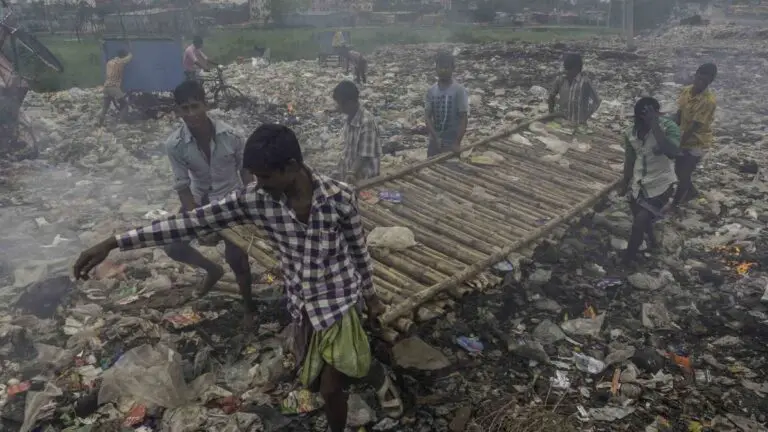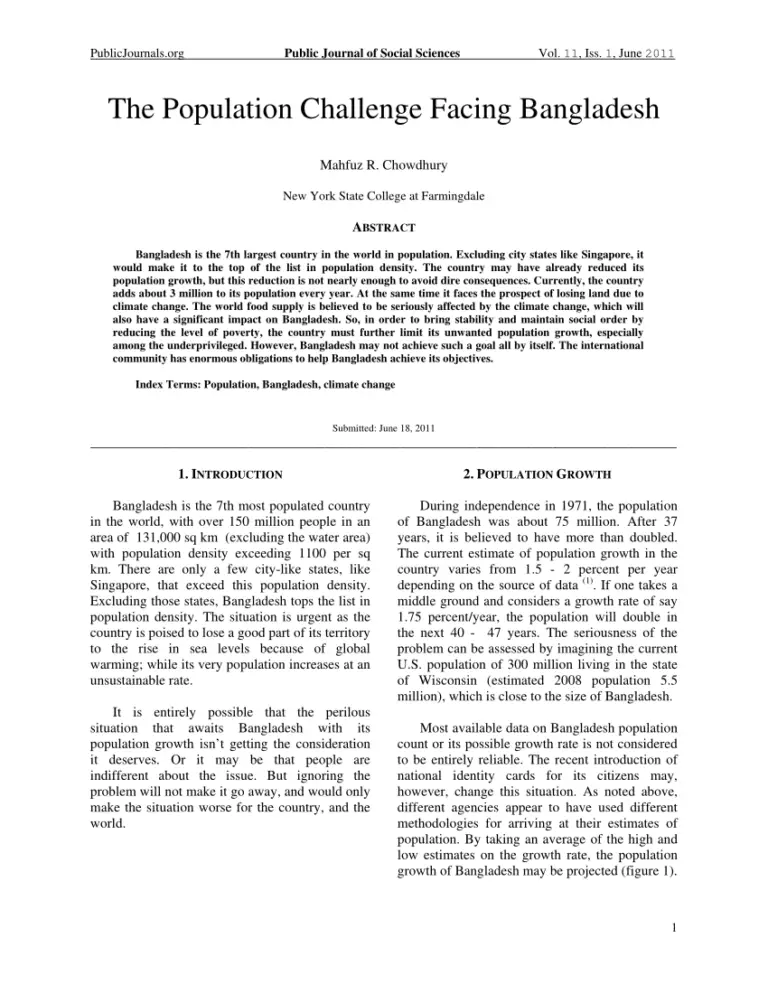Problem And Prospect of Agriculture in Bangladesh
Agriculture is the backbone of Bangladesh. It plays a vital role in the economy of Bangladesh. More than 60% of the people of Bangladesh are directly or indirectly dependent on agriculture.
The contribution of agriculture to GDP is about 18%. The main crops grown in Bangladesh are rice, jute, wheat, potato, pulse, vegetables etc. The country has a huge potential for agricultural development.
The government has taken various measures to develop the agricultural sector of Bangladesh. But there are still many problems in this sector which need to be addressed properly for its further development.
Agriculture plays a vital role in the economy of Bangladesh. More than half of the population is directly or indirectly dependent on agriculture for their livelihood. The sector contributes around 21% to the GDP and employs more than 43% of the workforce.
The country has made significant progress in agricultural production, but there are still many challenges that need to be addressed.
One of the biggest problems facing agriculture in Bangladesh is land scarcity. With a population of over 160 million people, Bangladesh has one of the highest population densities in the world.
This puts immense pressure on the limited amount of arable land available. As a result, farmers are forced to cultivate smaller plots of land which makes it difficult to achieve economies of scale and increases production costs.
Another challenge is access to credit and other financial services.
Smallholder farmers often lack collateral to qualify for loans from formal financial institutions. This limits their ability to invest in inputs and other farm improvements that could increase yields and incomes. There is also a lack of insurance products available to protect farmers against risks such as crop failure due to floods or droughts.
Despite these challenges, there are also many prospects for agriculture in Bangladesh. The country has rich natural resources, including some of the most fertile soil in the world, ample sunlight, and an abundance of water resources. These factors make Bangladesh well-suited for agricultural production.
What are the Problems of Agriculture in Bangladesh?
The Agricultural problems in Bangladesh are very similar to the agricultural problems in most other developing countries. The main problems are:
-Lack of mechanization: In Bangladesh, small farmers predominate and rely heavily on manual labor for all farm operations.
This makes farming very labor intensive and less productive. Lack of mechanization also means that farmers have to use traditional methods which are often inefficient.
-Poor soil fertility: Most of the land in Bangladesh is not naturally fertile and needs to be improved through proper management practices such as fertilizer application and crop rotation.
However, many farmers cannot afford these inputs or do not know how to properly use them, leading to poor soil fertility and low crop yields.
-Low technological level: Bangladeshi agriculture is still at a relatively low technological level. This includes the use of outdated methods and equipment, as well as a lack of access to information about new technology and innovations.
What are the Problems And Prospects of Agribusiness in Bangladesh?
Agriculture is the backbone of Bangladesh’s economy, accounting for more than 15% of GDP and employing nearly half of the workforce. The sector has been a key driver of poverty alleviation and economic growth in Bangladesh, but faces significant challenges going forward.
The problems facing agribusiness in Bangladesh include:
-Declining soil fertility: With intensive cultivation and limited application of fertilizer, soils are becoming increasingly degraded. This is leading to declining crop yields and farmers’ incomes.
-Lack of irrigation: Only around 20% of farmland in Bangladesh is irrigated, leaving smallholder farmers particularly vulnerable to droughts and floods.
This also reduces productivity and increases costs.
-Poor infrastructure: Lack of roads, storage facilities, processing plants and other infrastructure limits market access for farmers and drives up costs. This makes it difficult for smallholders to compete with large commercial farms.
-Climate change: Rising temperatures and changing weather patterns are already affecting agriculture in Bangladesh, leading to more frequent floods and droughts. If unchecked, climate change could have a devastating impact on the sector in the years ahead.
Despite these challenges, there are also reasons for optimism about the future of agribusiness in Bangladesh.
The country has made significant progress in recent years in terms of agricultural productivity, with per capita food production increasing by 50% since 1970. There is also scope to further increase agricultural productivity through better management practices and technology transfer. Additionally, Bangladesh has a large young population which presents an opportunity for further expansion of the sector.
.
What are the 10 Problems of Agriculture?
1. Agricultural productivity is often low due to a lack of modern technology and inputs.
2. Smallholder farmers often lack access to markets, credit and other vital services.
3. Soil fertility decline is a major problem in many areas, caused by unsustainable farming practices.
4. Pests and diseases are major constraints on agricultural production in many regions.
5. Water scarcity is a serious problem in many parts of the world, especially in arid and semi-arid regions.
6 .
Climate change is already affecting agriculture, with more extreme weather events and changing patterns of precipitation affecting crop yields.
7 . Deforestation continues at an alarming rate in many countries, leading to loss of valuable agricultural land .
What are the Issues And Problems in Agriculture?
The issues and problems in agriculture are many and varied. They include:
-The high cost of farmland
-The declining quality of land
-Water shortages
-Pest infestations
-Disease outbreaks
-Poor soil fertility
What is Agriculture Marketing,Importance, problems and prospects in Bangladesh||কৃষি বিপণন কী,
What are the Main Challenges Faced for Agricultural Development in Bangladesh
There are a number of challenges faced for agricultural development in Bangladesh. One challenge is the country’s topography. With nearly 80% of the landmass made up of river delta and floodplain, much of the arable land is susceptible to flooding and soil erosion.
This makes it difficult to consistently grow crops, and limits the amount of farmland that can be used for agriculture. Additionally, due to its location in the tropics, Bangladesh experiences extreme weather conditions which can further damage crops and lead to poor harvests.
Another challenge facing agricultural development in Bangladesh is access to water.
Due to the country’s high population density, there is competition for water resources, particularly during the dry season. This often leads to disputes between farmers and other water users, such as fishers or factory owners. Moreover, many farmers do not have access to irrigation systems, meaning they must rely on rainfall which can be unpredictable.
Finally, a third challenge relates to marketing and distribution channels for agricultural produce. Small-scale farmers often struggle to sell their crops at a fair price due to lack of bargaining power vis-a-vis large retailers or middlemen. In addition, poor infrastructure means that transport costs are high, further cutting into margins.
Solution of Agricultural Problems in Bangladesh
Agricultural problems are the main problems in Bangladesh. The soil of Bangladesh is very fertile but due to some reasons the production of crops is not good enough. There are many solutions of agricultural problems in Bangladesh.
The government is trying to solve these problems by providing subsidies and training to farmers.
The main agricultural problems in Bangladesh are:
1) Soil erosion: Soil erosion is a major problem in Bangladesh.
Due to heavy rainfall and floods, the topsoil gets washed away and this affects crop production. To solve this problem, the government has launched a ‘Soil Conservation Programme’ under which farmers are given subsidies to construct embankments and plant trees on their land.
2) Salinity: Salinity is another major problem faced by farmers in Bangladesh.
Due to high tides, salt water from the sea enters the rivers and eventually seeps into the soil, making it unsuitable for cultivation. To combat this problem, the government has set up desalination plants which convert salt water into fresh water that can be used for irrigation purposes.
3) Waterlogging: Waterlogging is yet another agricultural problem caused by excessive rainfall and floods.
When there is too much waterlogging, it results in anaerobic conditions which make it difficult for crops to grow.
Prospects And Challenges of Agro Industry in Bangladesh
The agro-based industries in Bangladesh have great potentials for development. The country has a vast agricultural land and produces a variety of crops throughout the year. The sector provides employment to a large number of people, both in the rural and urban areas.
The agro-based industries can be categorized into three groups: food processing industries, jute based industries, and leather based industries.
The food processing industry is the largest among the agro-based industries in Bangladesh. It includes fruit and vegetable processing, fish and poultry processing, milk and dairy products, spices production, etc.
The sector has been growing at a rate of 8% per year over the last few years and currently employs around 1 million people.
The jute based industry is the second largest agro-based industry in Bangladesh. Jute is one of the major crops grown in the country and is used to make a variety of products such as bags, ropes, carpets, etc.
The sector employs around 0.5 million people and has been growing at a rate of 5% per year over the last few years.
The leather based industry is the third largest agro-based industry in Bangladesh. Leather is used to make footwear, belts, bags, wallets, etc.
Challenges of Agribusiness in Bangladesh
The agribusiness sector in Bangladesh faces a number of challenges, which include high costs, lack of technology, and limited access to markets. These challenges have constrained the sector’s growth and prevented it from contributing more significantly to the country’s economy.
High costs: The cost of inputs such as seed, fertilizer, and irrigation is relatively high in Bangladesh compared to other countries in the region.
This has made it difficult for farmers to compete in the global marketplace.
Lack of technology: Most farmers in Bangladesh still rely on traditional methods of production, which are often less efficient than modern techniques. This limits their productivity and makes them less competitive.
Limited access to markets: The majority of small-scale farmers in Bangladesh lack access to formal markets where they can sell their produce at fair prices. This forces them to sell their products through informal channels at lower prices.
Conclusion
The Agricultural sector in Bangladesh is the backbone of the economy, contributing around 21% to the GDP. The sector employs nearly half of the country’s workforce and supports the livelihoods of millions of people. Despite its importance, agriculture in Bangladesh faces many challenges.
These include declining soil fertility, land degradation, water scarcity, and climate change. While these problems are significant, there are also many prospects for agriculture in Bangladesh. With proper investment and policy support, the sector can continue to play a vital role in the country’s development.






